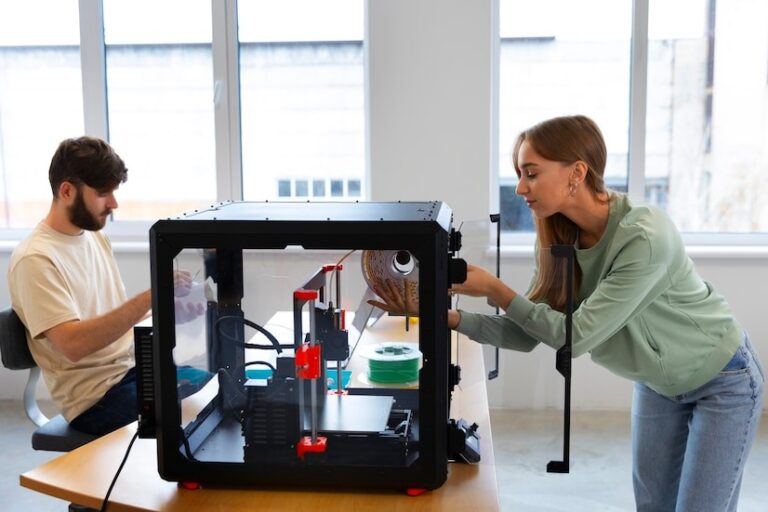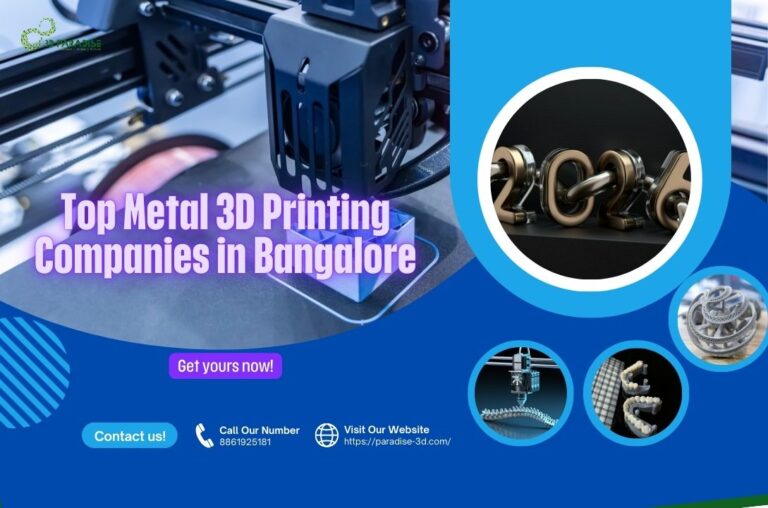Role of 3D Printing in the Fight Against Climate Change
Introduction to 3D Printing and Climate Change
Climate change has vast impacts, rising temperatures, extreme weather, and loss of biodiversity threatening ecosystems. To tackle this urgent crisis requires innovative solutions, one of which is 3D printing, an alternative manufacturing approach known for creating complex designs with minimum waste, thereby reducing emissions, conserving resources, and supporting sustainable practices.
How 3D Printing Works
3D printing, or additive manufacturing, creates objects by adding materials in a sequential layering process directly from digital designs. Materials are not just plastic and metal but can include recyclable waste. While the traditional manufacturing process generates maximum material waste in all possible forms, 3D printing eliminates all that waste and offers flexibility in production-critical paths for several eco-friendly and resource-efficient innovations.
Waste Reduction by 3D Printing
The traditional manufacturing methodology produces many wastes because it is subtractive. It carves away excess material from an entire piece. In contrast, 3D printing is based on an additive process that minimizes the amount of waste because it needs only the amount required. Such efficiency reduces the usage of raw materials and is capable of sustaining a zero-waste manufacturing cycle.
Environmentally Friendly Materials in 3D Printing
With the advent of 3D printing, materials have also developed to be eco-friendly, sustainable. Plant-based materials and biodegradable ones like PLA from corn now become the new favorites in 3D printing, recycled plastics, and other renewable sources. Thus, such materials do not just make 3D printing waste-efficient but also saves the planet.
Energy Efficiency in 3D Printing
Where energy consumption is a major issue for most of the manufacturing processes, 3D printing often works to save energy than in any other method. Because 3D printing reduces the number of operations and materials required, it uses less energy. The localized production of producing products close to the point of use or sale also takes away the transportation factor that creates more emissions.
Localized Production Reduces Carbon Emission
The vast capability of 3D printing allows for localized production, eliminating the carbon footprint through supply chains around the world. Companies can reduce shipping emissions and the logistics of long-distance transportation by producing on-demand and at local facilities.
Carbon Capture Solutions Through 3D Printing
3D printing may also offer support for carbon capture. The research is developing carbon-capturing devices that are designed to be 3D printed in a flexible and efficient production of equipment that is capable of direct extraction of CO₂ from the atmosphere. This might revolutionize the whole cutting down of greenhouse gases.
Construction and Green Architecture Using 3D Printing
3D-printed buildings and architectural parts make construction sustainable. Since they can be printed from local recycled or even biodegradable material, the construction process has a lesser impact on the environment. Thus, architects and engineers exploit 3D printing in the development of optimized structures with low waste.
Water Conservation through 3D Printing
Traditional production often necessitates a great deal of water. Water is minimized in 3D printing because most of its production does not necessitate a large quantity of water. Some agricultural companies are now beginning to utilize 3D printing for effective irrigation and water-saving parts, minimizing the consumption of water even further.
The Role of 3D Printing in Recycling and Reusing
Among the most promising applications of 3D printing is recycling and reuse. The use of 3D printing makes it possible to recycle plastics and other kinds of waste to create new products. This includes companies manufacturing commercial-grade, closed-loop systems 3D printers, which directly convert used materials into new filament.
3D Printing for Renewable Energy Applications
The production of 3D-printed parts can be enabled for components of renewable energy systems such as solar panels and wind turbines. With continued growth in the development of renewable energy, it is possible to offer affordable access to maintenance and new installations, especially in remote or underserved regions.
Pollution and Pressure on Landfill Intermezzo
3D printing helps decongest landfills and contribute to pollution reduction by giving durable, reusable products. Instead of disposable items and single use plastics, high-quality 3D-printed ones can replace them, with a decrease in landfill contribution.
Applications of 3D Printing in Sustainable Agriculture
3D printing technology is promising in precision agriculture, where designed tools and equipment support sustainable farming. Examples of 3D printed components-for instance, a bespoke irrigation nozzle or biodegradable planting pod-have assisted farmers in conserving resources while minimizing their impact on the environment.
Challenges and Limitations of 3D Printing for Climate Action
Despite its benefits, 3D printing comes with some environmental challenges. For example, some of the materials used in 3D printing may contain specific plastics that produce pollutants if not managed appropriately. The whole production process also involves an enormous amount of energy and therefore is bound to face economic and technical bottlenecks when expanded at this wide adoption scale.
Future of 3D Printing in Climate Change Mitigation
It would look even much faster to innovate climate changes with the use of 3D printing in the future. New innovations about sustainable materials, energy-saving machines, and scalable designs are coming ahead to make 3D printing an essential tool for combating climate challenges.
Conclusion
The way manufacturing, construction, energy, and agriculture are approached is being changed through a sustainable model that has much reduction in waste, limits resource usage, and minimizes emission. The more the technology advances, the better will be its contribution towards combating climate change through scalable and innovative future solutions.
Frequently Asked Questions (FAQs)
Can 3D printing really help fight climate change?
Answer: Yes by reducing waste, utilization of more renewable materials and reduction in its emissions, 3D printing has an excellent play in fighting climate change
What are sustainable 3D printing materials available?
Answer: PLA plastics, recycled plastics or filament from plant sources for bio-renewable sources for using 3D prints with, 3.
Are there energy-saving 3D printers?
Answer: Yes through such near localized and on demand based manufacturing.
How is 3D printing applied for renewable energy?
Answer: 3D printing can fabricate components of solar panels and wind turbines to advance the sustainable energy sector.
Do 3D printed houses emit less carbon?
Answer: Yes, because the 3D printed houses consume fewer materials and use as much material as possible that is available locally and designs which consume minimal energy.
What are the disadvantages of 3D printing in sustainability?
Challenges: managing energy consumption, material sourcing, and associated economic barriers to the large-scale adoption of sustainable 3D printing practices.








